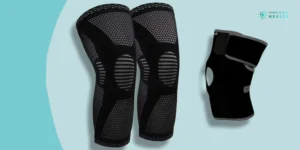Introduction
Does Medicare Cover Blood Pressure Monitor? In recent times, the importance of at-home blood pressure monitoring has gained prominence, leading individuals to question whether Medicare covers blood pressure monitors. In this comprehensive guide, we delve into the intricacies of Medicare coverage for different types of blood pressure monitors, providing invaluable insights for those seeking clarity on this crucial healthcare aspect.
Why Might I Need At-Home Blood Pressure Monitoring?
Inaccurate Doctor’s Office Readings
Many individuals experience heightened anxiety during visits to the doctor, resulting in inaccurate blood pressure readings. At-home monitoring eliminates the stress associated with clinical environments, offering more reliable insights into one’s blood pressure trends.
Renal Dialysis
For those undergoing renal dialysis, regular blood pressure monitoring is essential. Having an at-home blood pressure monitor ensures that individuals can manage their health proactively, reducing the risks associated with renal complications.
What Does Medicare Cover for Different Types of Blood Pressure Monitors?
Blood Pressure Cuffs
Does Medicare Cover Blood Pressure Monitor? Medicare covers the cost of blood pressure cuffs, a vital component of at-home monitoring kits. These cuffs are user-friendly and can be easily incorporated into your daily health routine.
Ambulatory Blood Pressure Monitors
For a more dynamic approach to blood pressure monitoring, Ambulatory Blood Pressure Monitors (ABPMs) offer a comprehensive solution. Medicare recognizes the significance of ABPMs in providing a continuous, 24-hour blood pressure profile, allowing for a more accurate assessment of one’s cardiovascular health.
How to Use an At-Home Blood Pressure Monitor
Understanding the proper usage of your at-home blood pressure monitor is crucial for obtaining accurate results. Here’s a step-by-step guide:
- Positioning: Sit in a comfortable position with your back straight and supported.
- Placement: Secure the cuff on your upper arm, ensuring a snug fit without being too tight.
- Rest: Allow yourself a few minutes of relaxation before initiating the monitoring process.
- Consistency: Take readings at the same time each day for a reliable trend analysis.
Medicare Coverage Criteria for At-Home Blood Pressure Monitors
To qualify for Medicare coverage for at-home blood pressure monitors, individuals must meet specific criteria. These criteria include a documented diagnosis of hypertension and a prescription from a healthcare professional.
White Coat Syndrome Criteria
Medicare recognizes the prevalence of White Coat Syndrome, where individuals exhibit elevated blood pressure in clinical settings due to anxiety. At-home monitoring helps distinguish between actual health concerns and situational stress.
Masked Hypertension Criteria
Individuals with Masked Hypertension, a condition where blood pressure is normal in clinical settings but high elsewhere, also benefit from at-home monitoring. Medicare acknowledges the importance of identifying such cases early for effective management.
Basic Instructions for Using an ABPM
When utilizing an Ambulatory Blood Pressure Monitor, follow these basic instructions for optimal results:
- Wear Time: Keep the monitor on for the entire 24-hour period, except during activities that may damage the device (e.g., bathing).
- Activity Log: Record your activities and any symptoms experienced during the monitoring period.
- Return: Ensure the device is returned promptly to your healthcare provider for data analysis.
Tips for Buying Your At-Home Blood Pressure Monitor
Investing in a personal blood pressure monitor requires careful consideration. Here are essential tips to guide your purchase:
- Accuracy: Opt for monitors with clinically validated accuracy.
- Cuff Size: Choose a monitor with an appropriate cuff size for your arm circumference.
- Ease of Use: Select user-friendly models with clear instructions.
- Memory Capacity: Consider monitors with ample storage for long-term tracking.
Hypertension Info and Helpful Tips
Understanding Hypertension
Hypertension, or high blood pressure, is a common health concern that requires proactive management. Regular monitoring, lifestyle modifications, and adherence to prescribed medications play a pivotal role in controlling hypertension.
Helpful Tips for Managing Hypertension
- Healthy Diet: Adopt a diet rich in fruits, vegetables, and low-fat dairy while minimizing sodium intake.
- Regular Exercise: Engage in moderate-intensity exercise for at least 150 minutes per week.
- Stress Management: Practice stress-reducing techniques such as meditation and deep breathing.
- Medication Adherence: Take prescribed medications consistently as directed by your healthcare provider.
The Takeaway
In conclusion, at-home blood pressure monitoring is a valuable tool in managing cardiovascular health. Medicare covers various types of blood pressure monitors, including cuffs and Ambulatory Blood Pressure Monitors, ensuring individuals have access to essential monitoring tools. By adhering to proper usage guidelines and considering essential tips when purchasing a monitor, individuals can actively contribute to their overall well-being.
Related Article: High Blood Pressure Chart By Age And Gender





